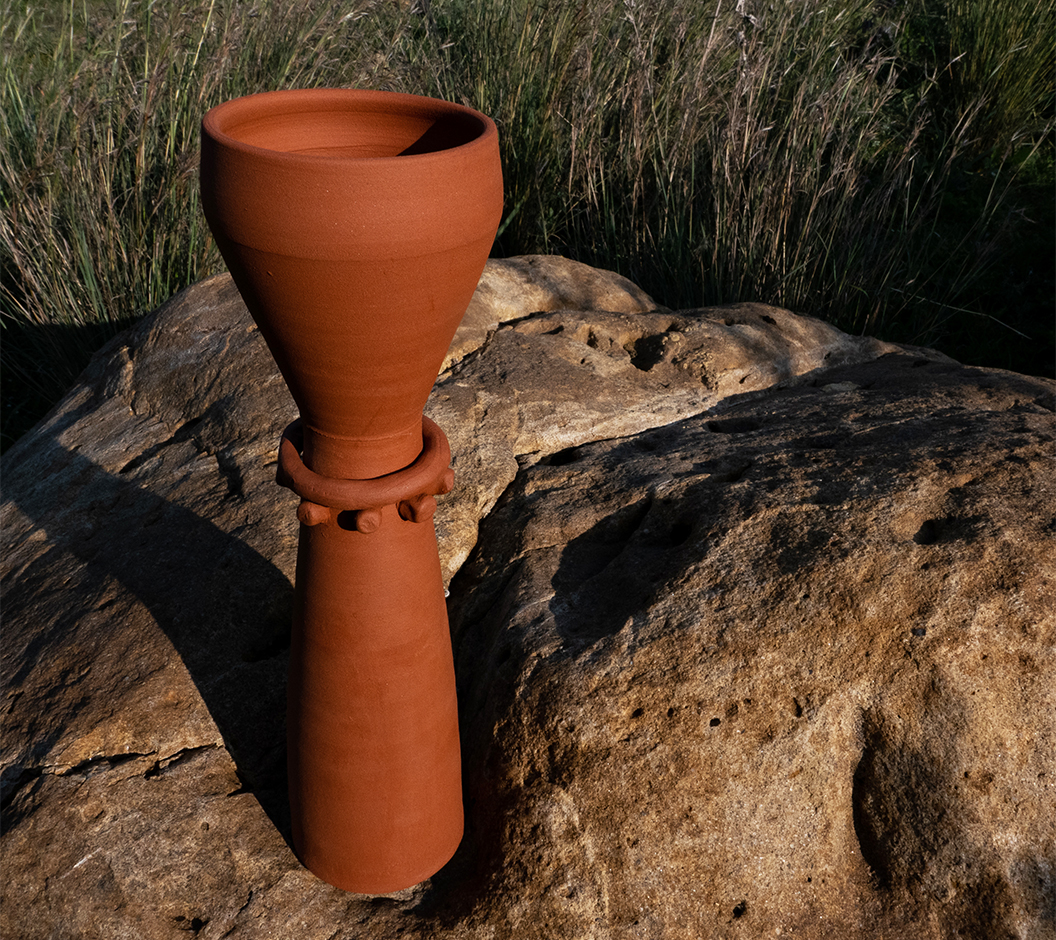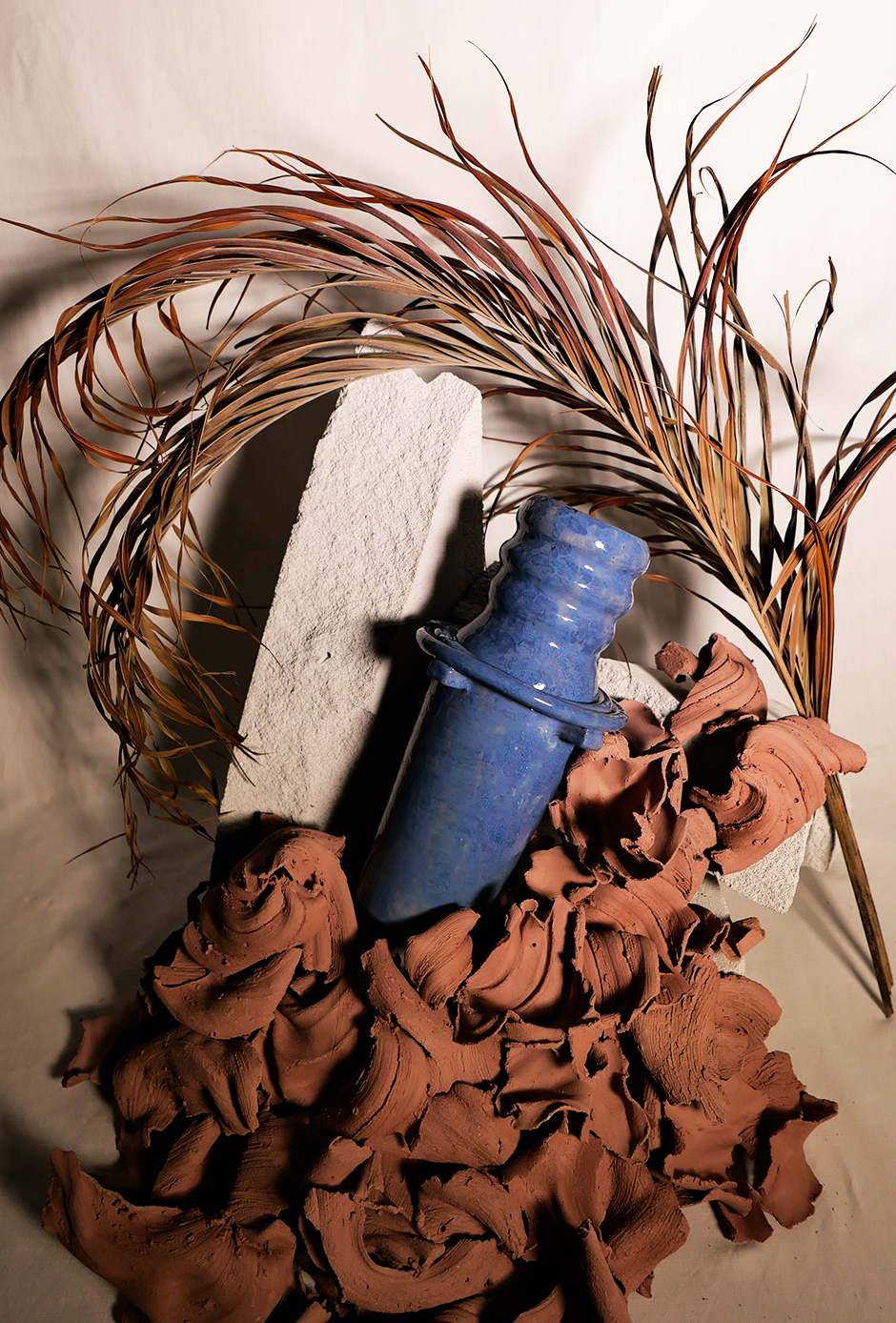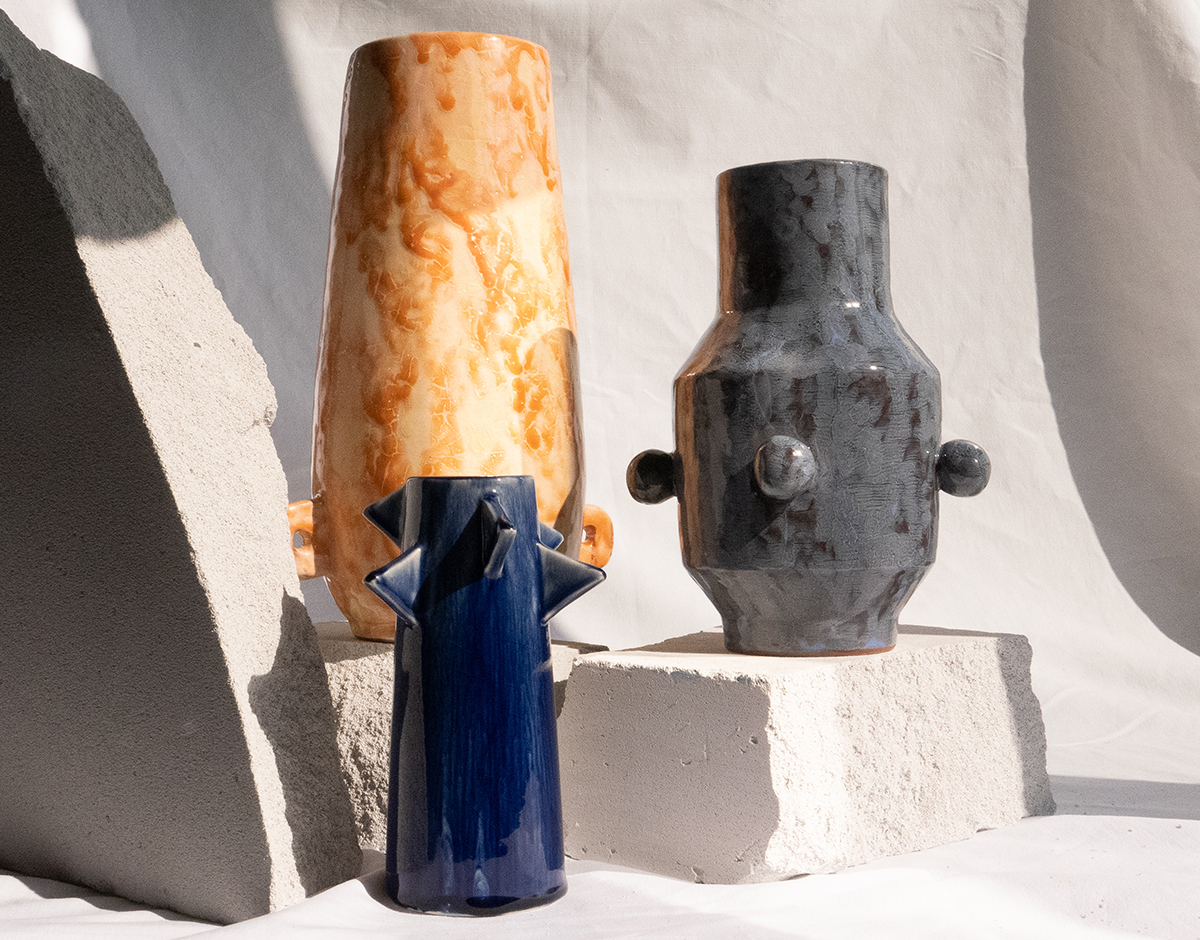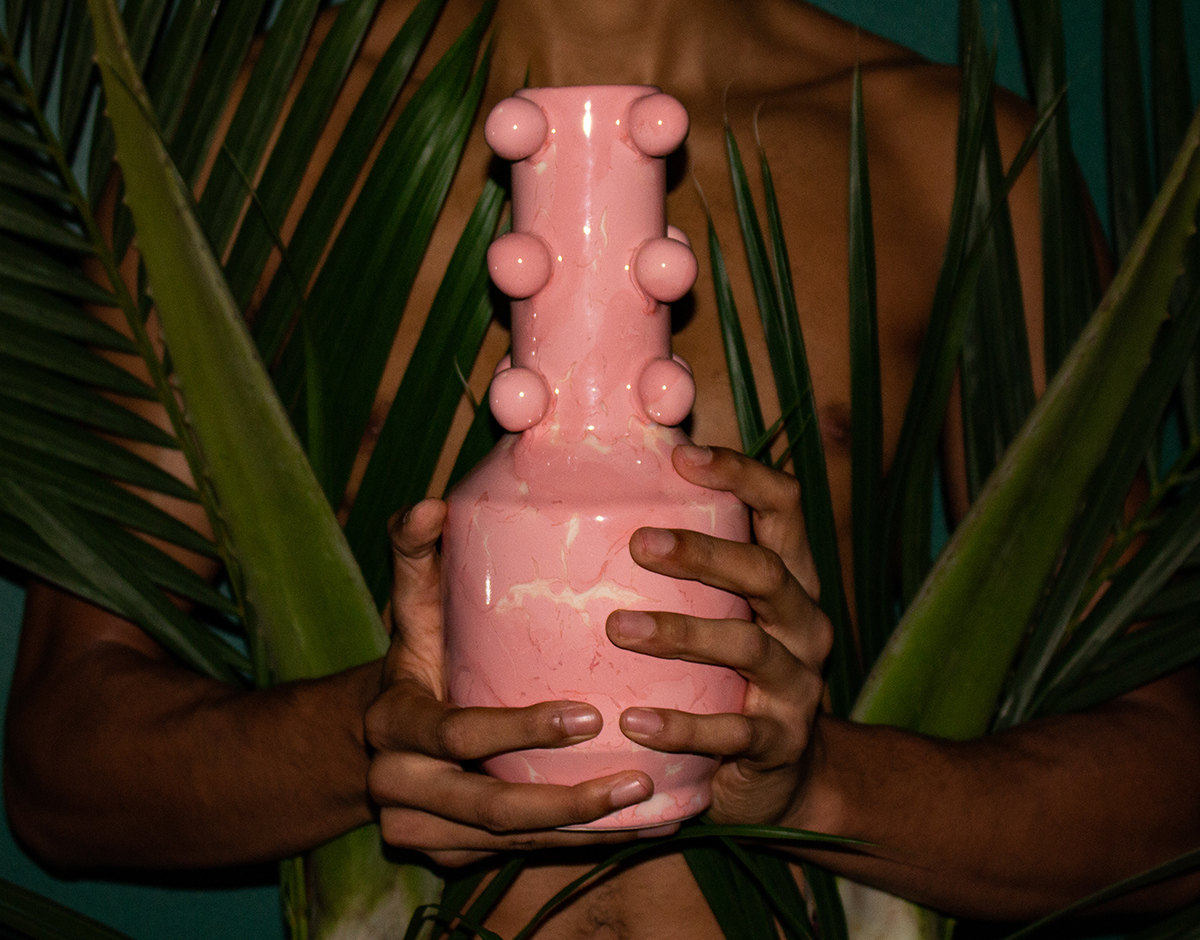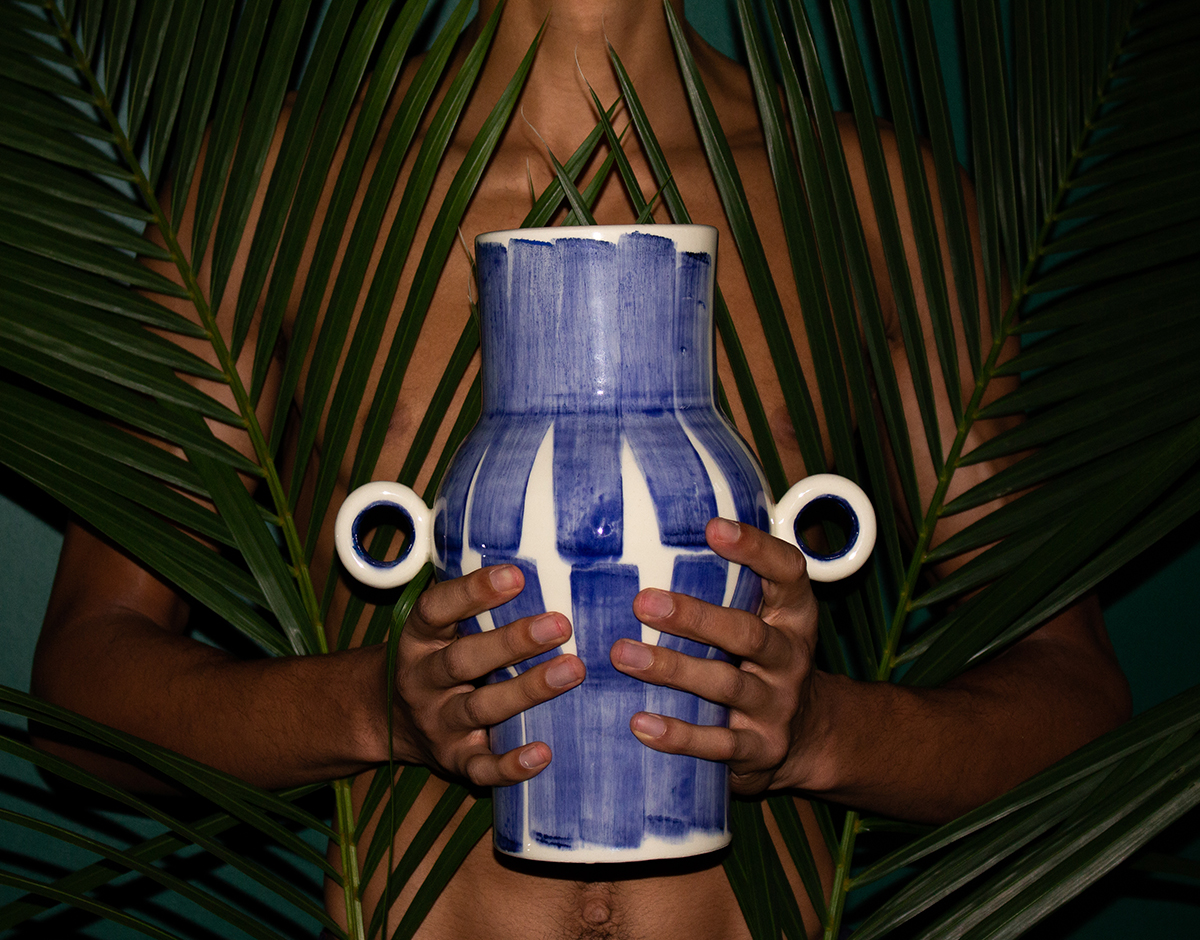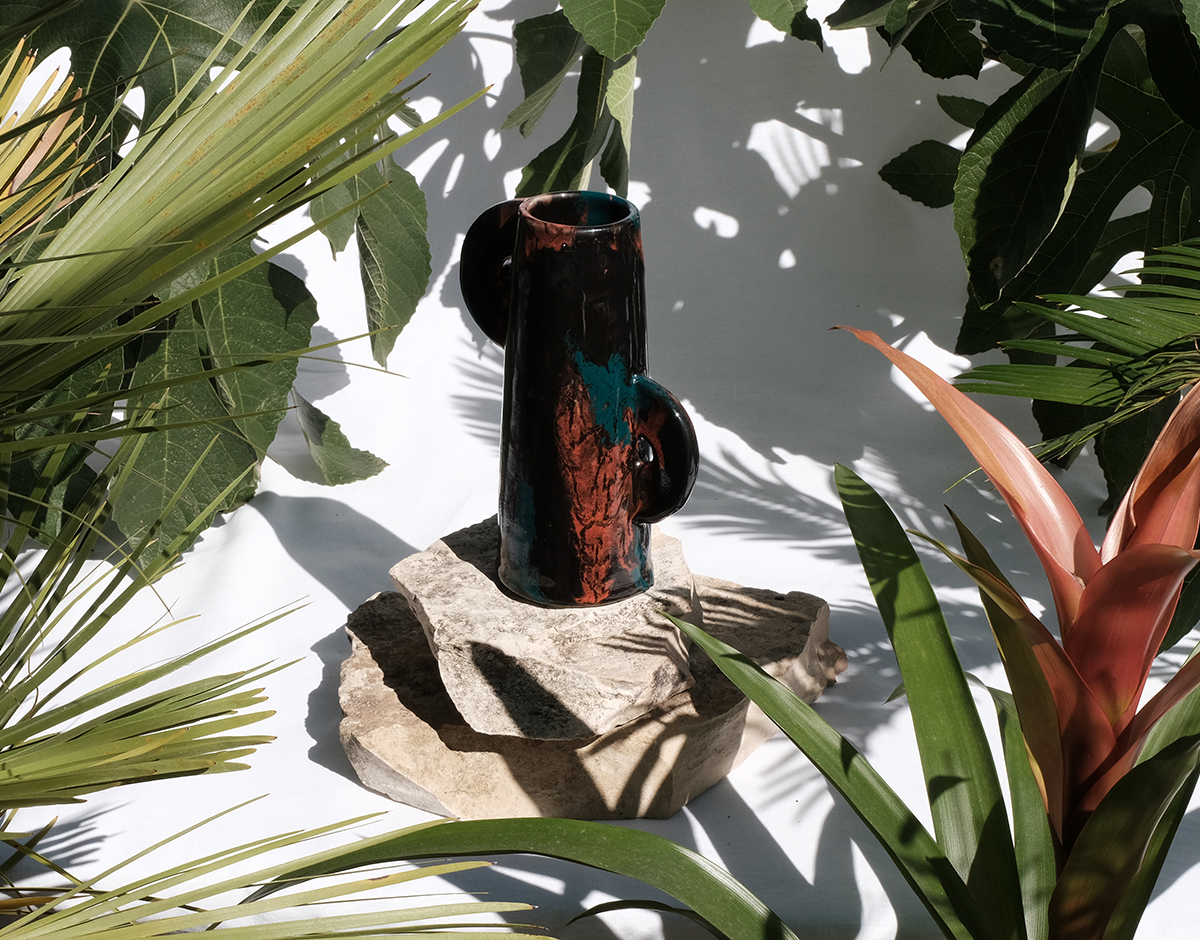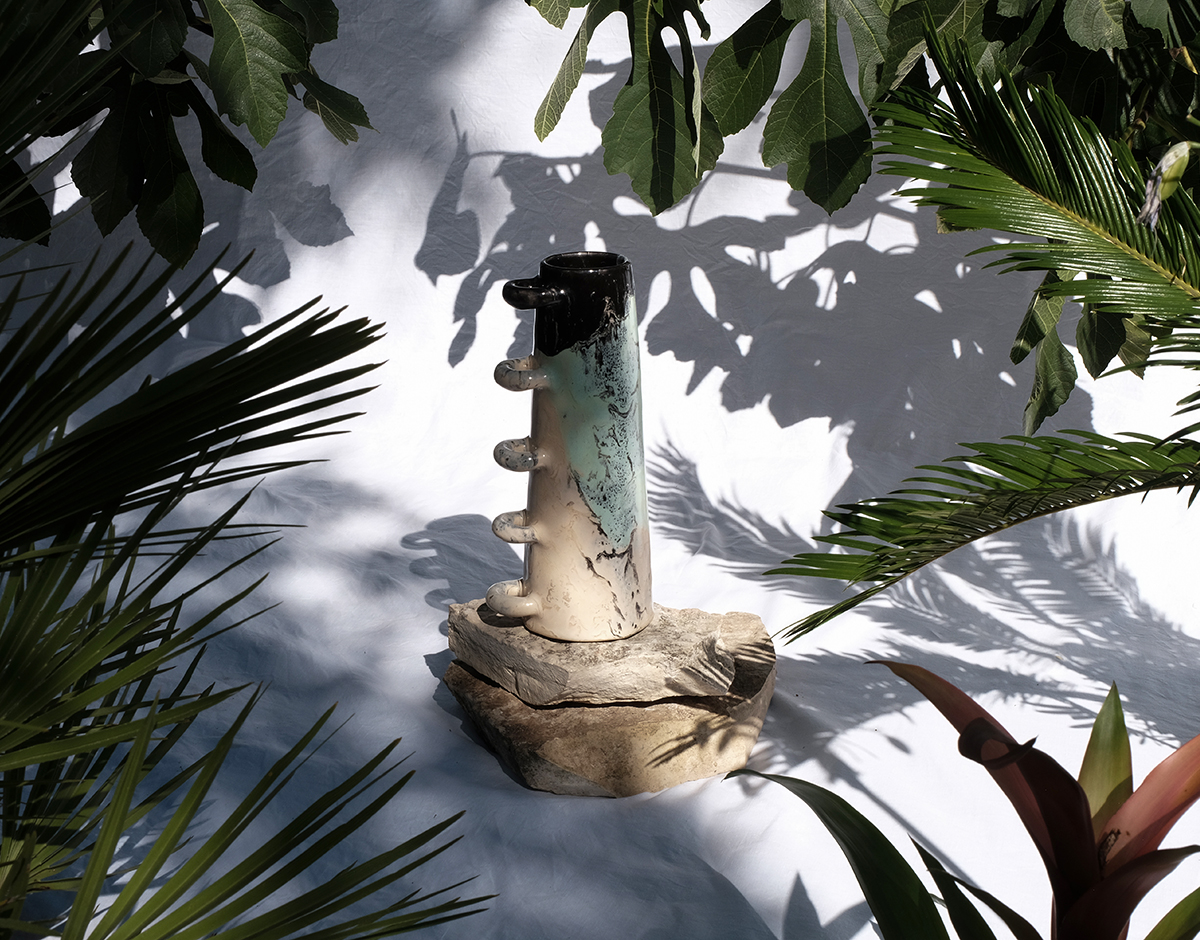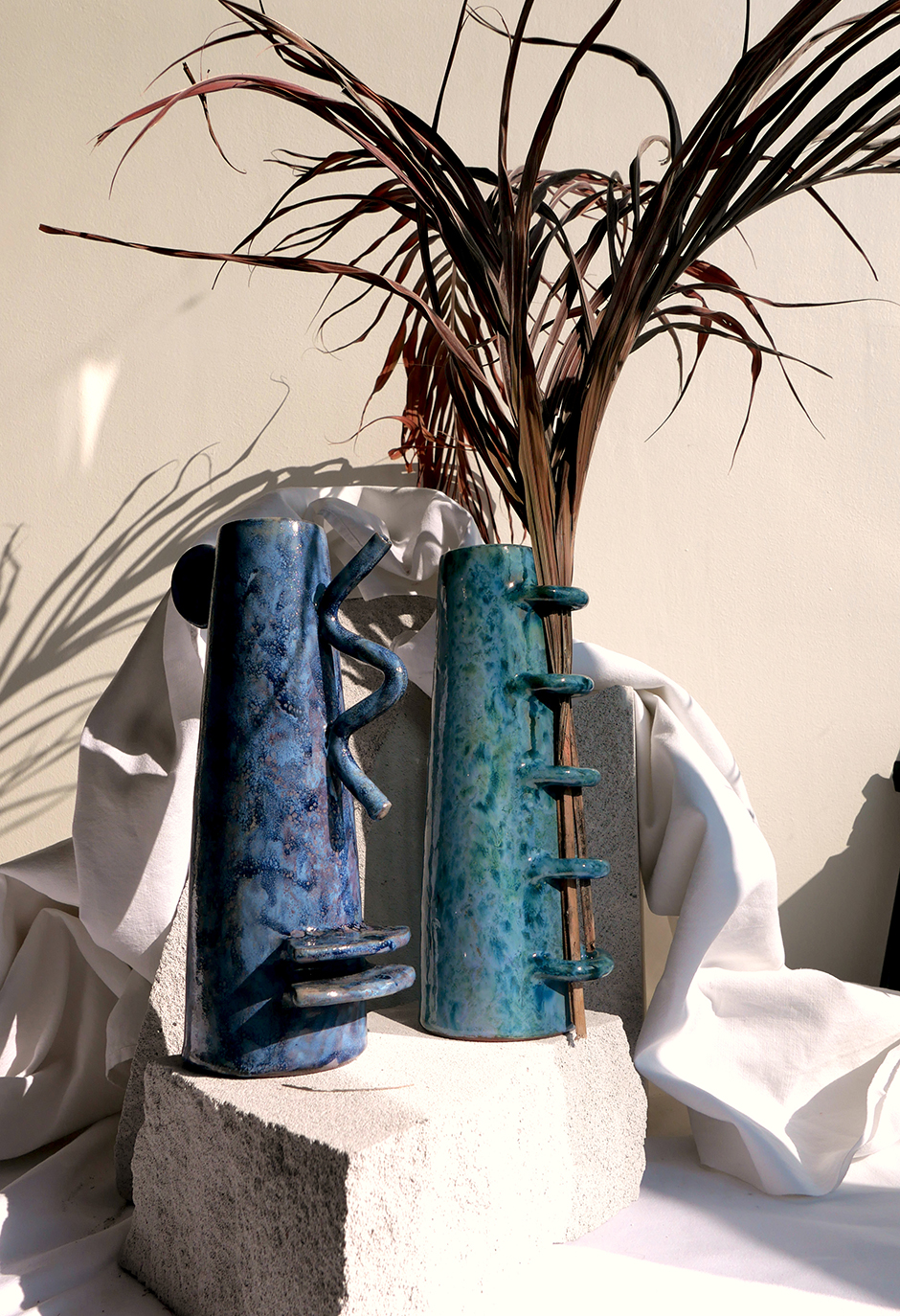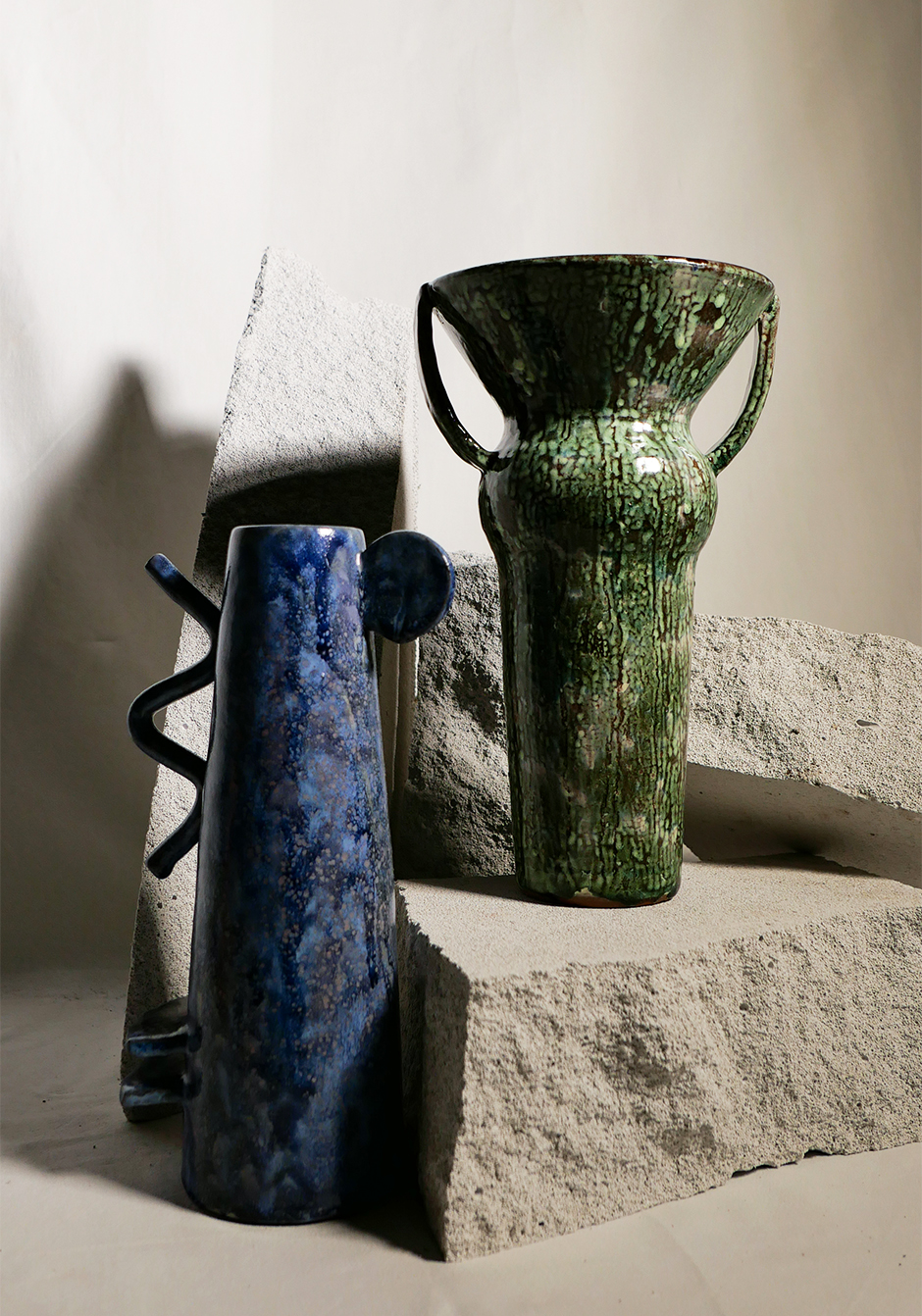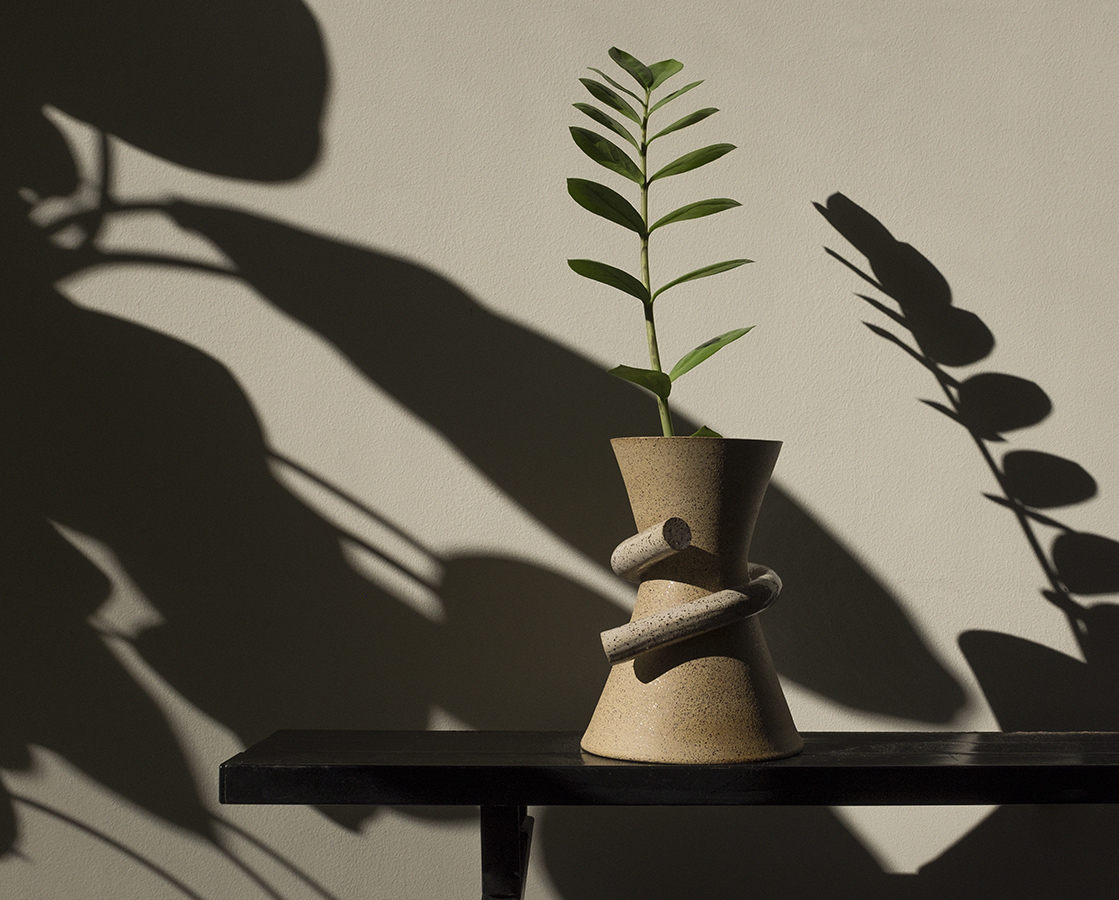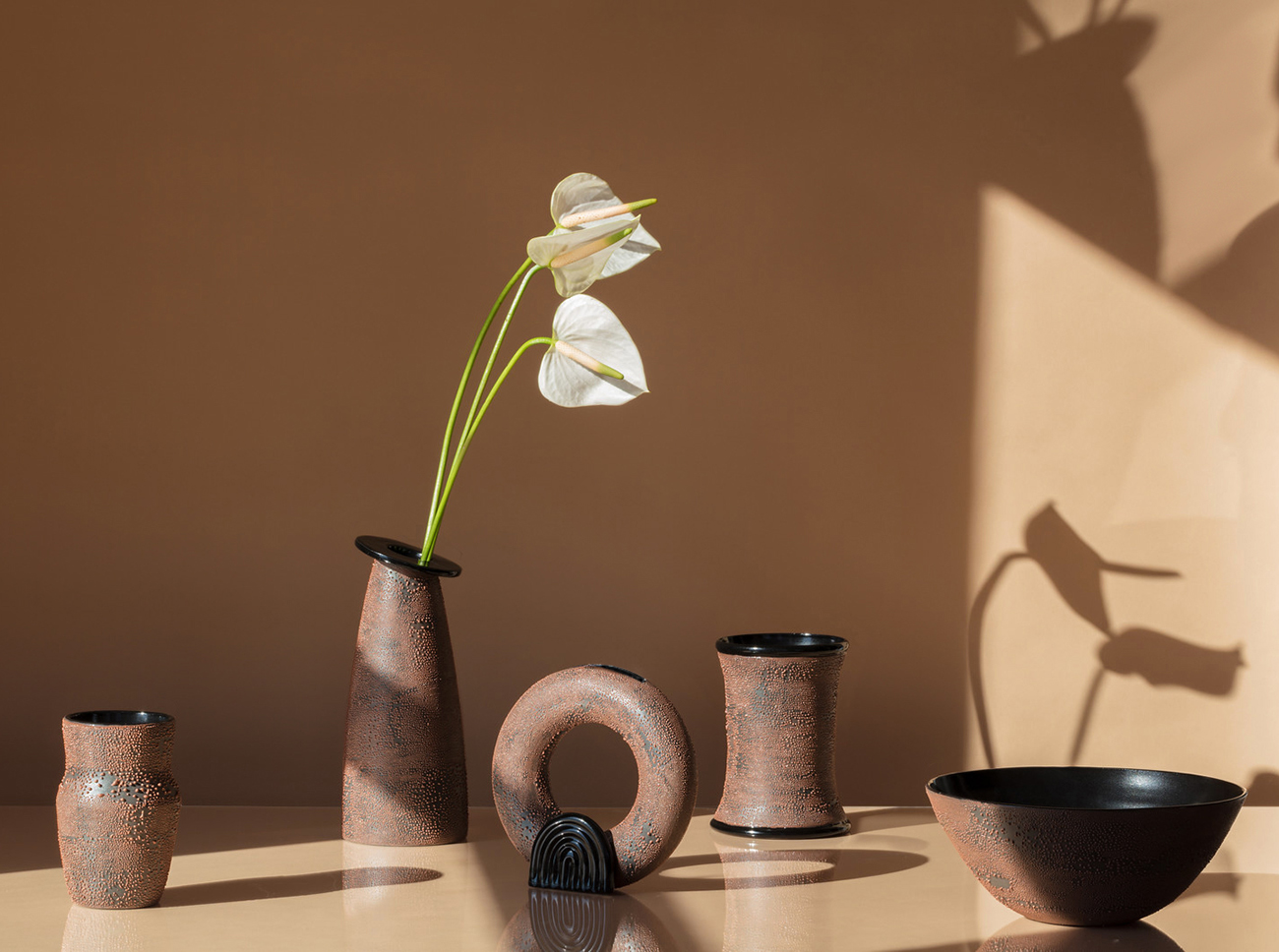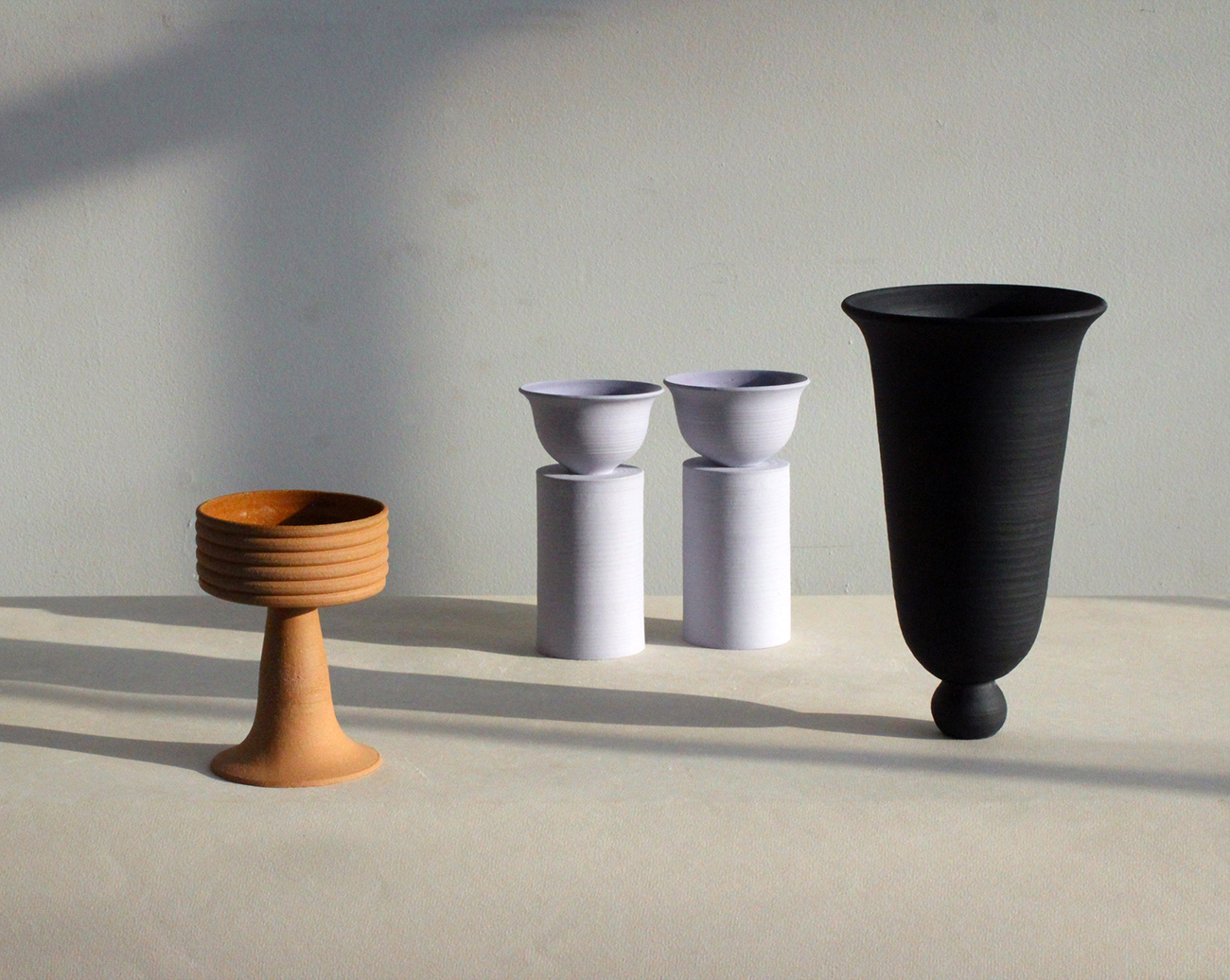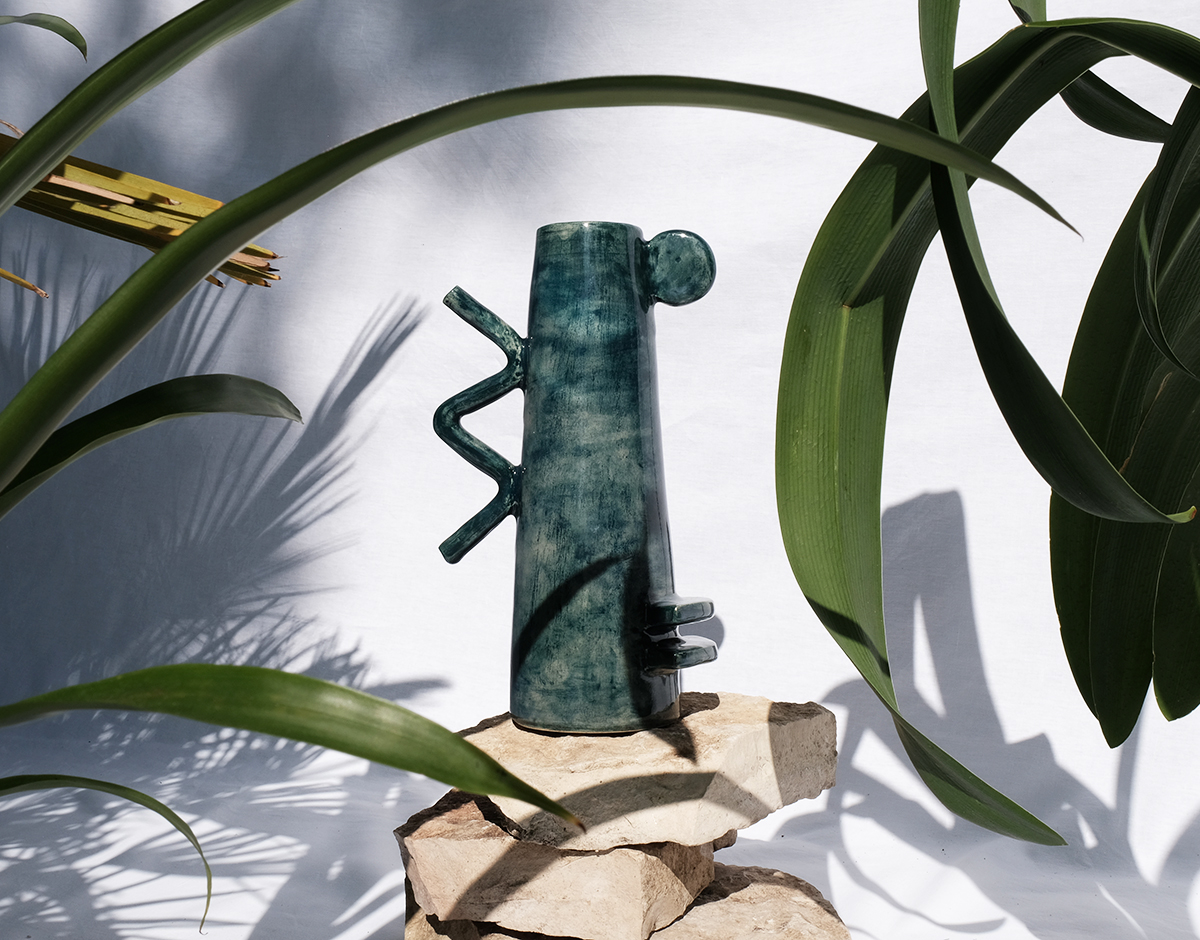
09.24.20
Up and Coming
This New Ceramics Brand is a Collab Between Two Parisians and the Berber Craftspeople of Northern Algeria
The unconventional ceramics brand IBKKI is the brainchild of Parisians Azel Ait-Mokhtar and Youri Asantcheeff. Their collections are a physical manifestation of their travels to the Kabylie region of Algeria and their collaboration with Berber craftspeople, but the duo didn’t take their cues from European Modernists like Matisse and Picasso, who had a tendency to appropriate elements from African art and call them their own. Azel’s family is from Kabylie, and he grew up going to the region every summer. In 2017, Azel asked former design schoolmate Youri, whose father happens to work in Algeria, to come along and explore the rich tradition of Berber design and craft. From this — and several subsequent trips, where the industrial design grads explored silversmithing, woodworking, textiles, as well as pottery — IBKKI was born.
Trial and error are important aspects of the IBKKI process. On their first trip to Kabylie, the pair learned firsthand that the Berber culture is reserved, and that they would not be able to gain access to ceramics workshops without proper introduction. As two metropolitan Westerners going into Algeria, humility, self-deprecation, and respect were qualities Azel and Youri leaned into. Their chosen project name, IBKKI, indicates such a mindset: the word is adopted from a small monkey endemic to the region. The duo explained: “It’s said that at some point in history monkeys were part of everyday life. They were allowed to go inside houses and were accepted as part of the villages. Almost like us going into workshops and wandering until we are accepted!”
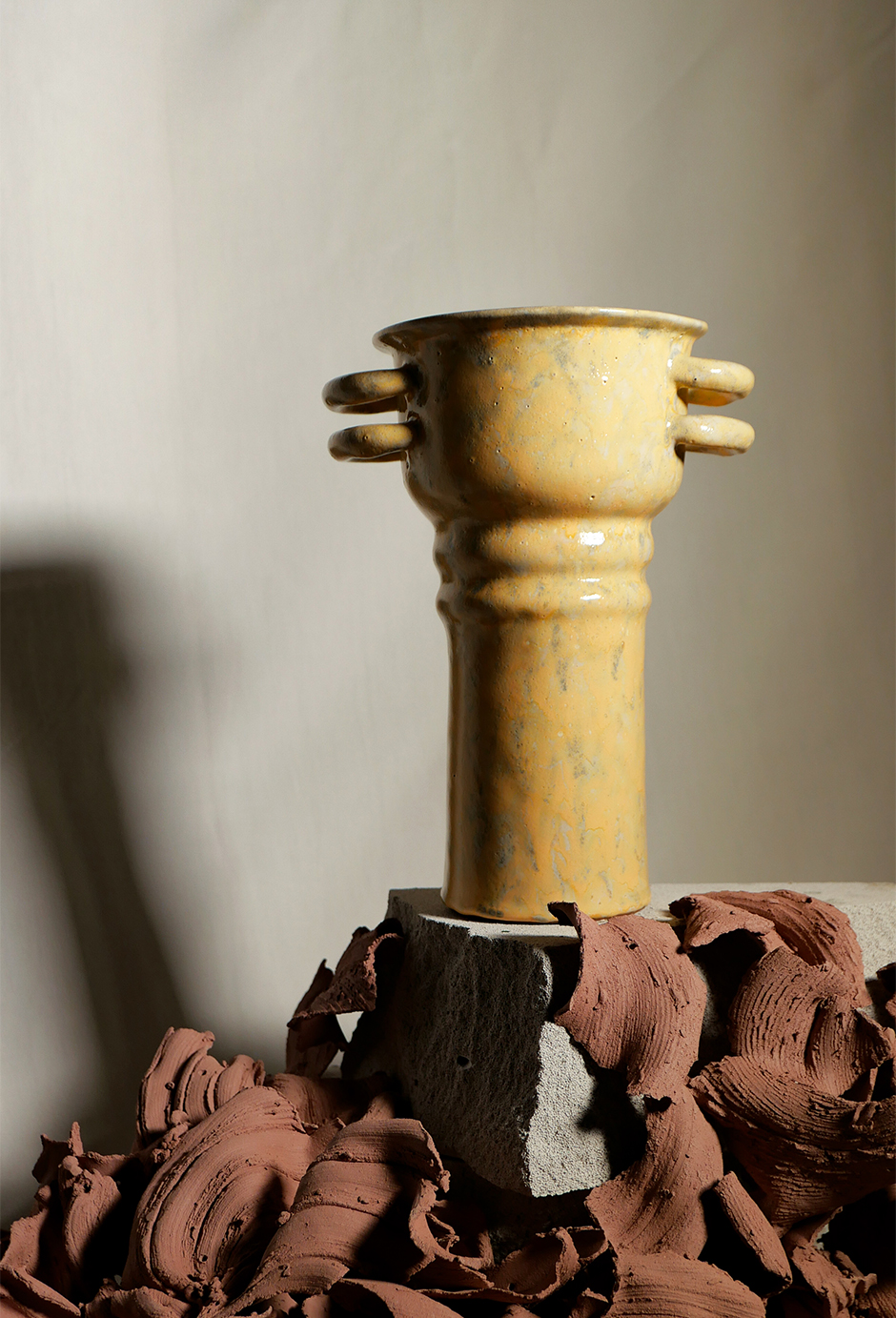
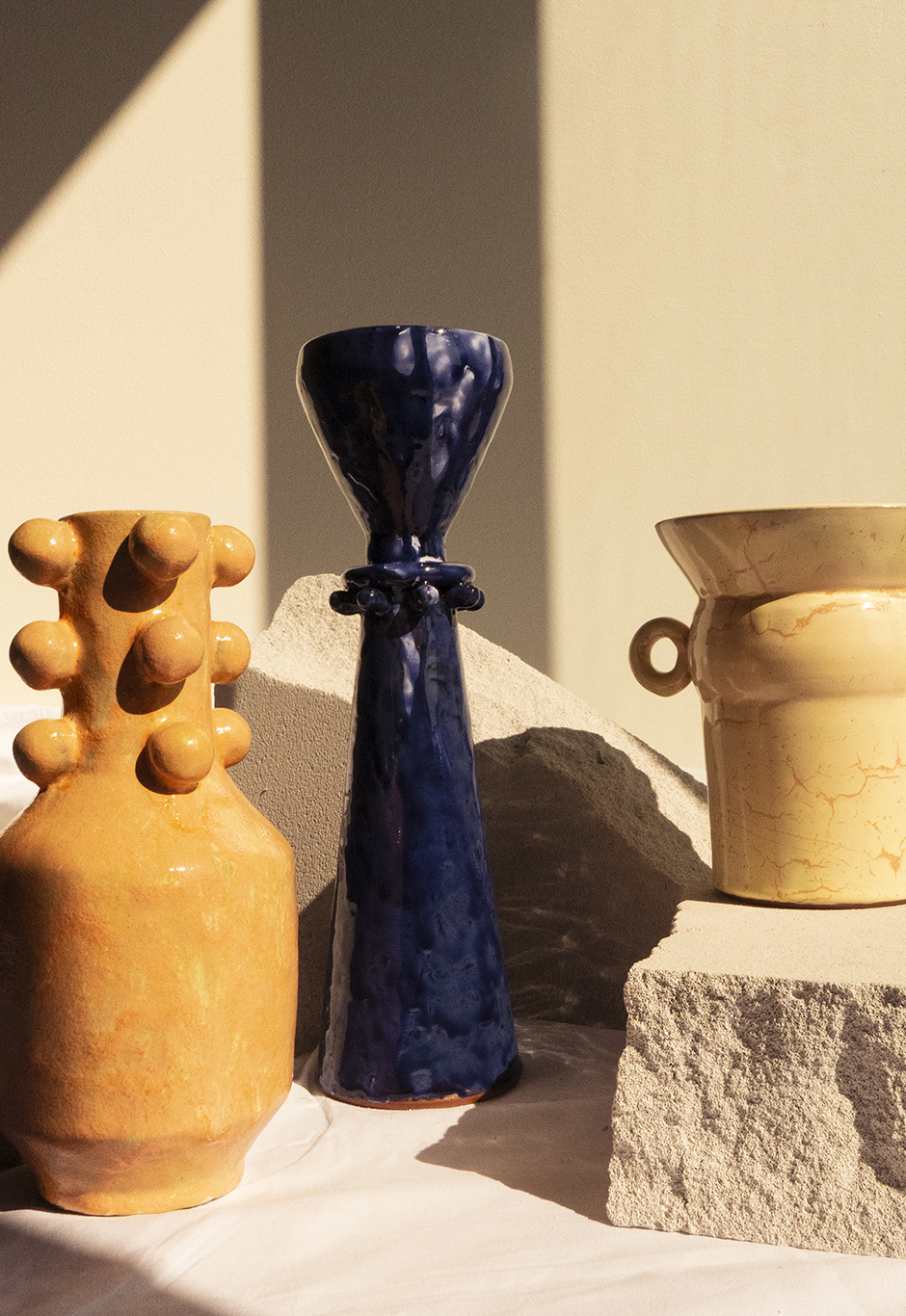
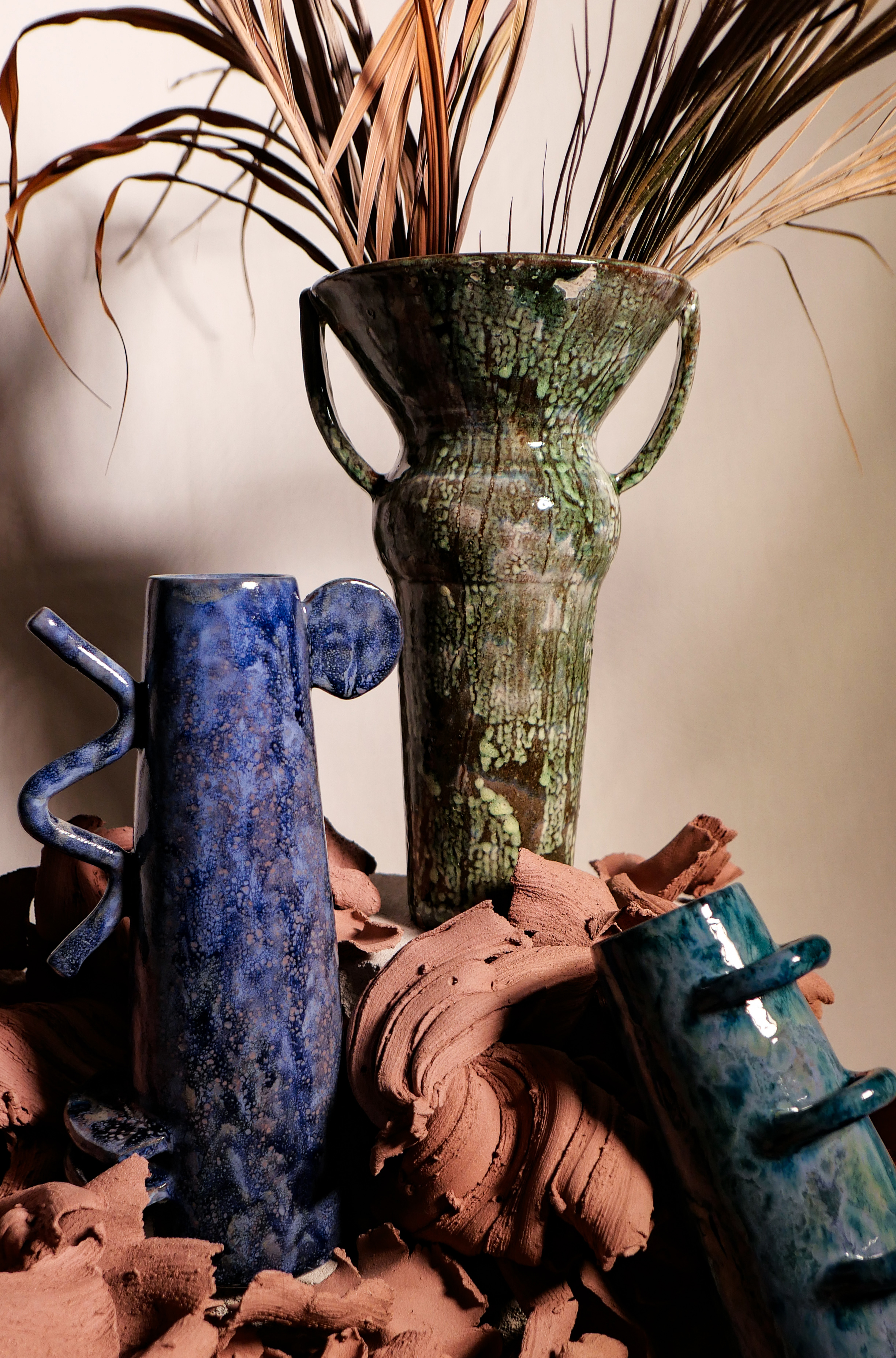
The pair stayed over seven months on their next trip, allowing ample time for relationships to develop. It was on this longer trip that they established a symbiotic relationship with a family workshop headed by a gentleman named Nabil, whom Azel and Youri consider “more like a friend or cousin.” Azel and Youri begin by asking Nabil to throw various vessel shapes on the pottery wheel. Based on generations of experience, Nabil sometimes rejects or approves their body shape requests. Azel and Youri then experiment on the bodies with handles, decoration, various glazes, and multiple firings — as many as six to seven firings in some cases. According to Azel and Youri, Nabil was almost as excited as they were in some cases to see what would come out of the kiln. Asked about his experience working with IBKKI, Nabil says: “I was turning the same shapes everyday with the same clay. But working on the [IBKKI] collection was very demanding. I had to be more precise and focus a lot more. We also used a lot of different clays… It was a lot of work and research for us three, and I had to use new tools and learn new skills everyday. I progressed a lot [in my practice].” The team embraces rule-breaking and failure as part of their creative journey: “Our rate is about 70% failure, 30% success,” Azel and Youri say with a chuckle.
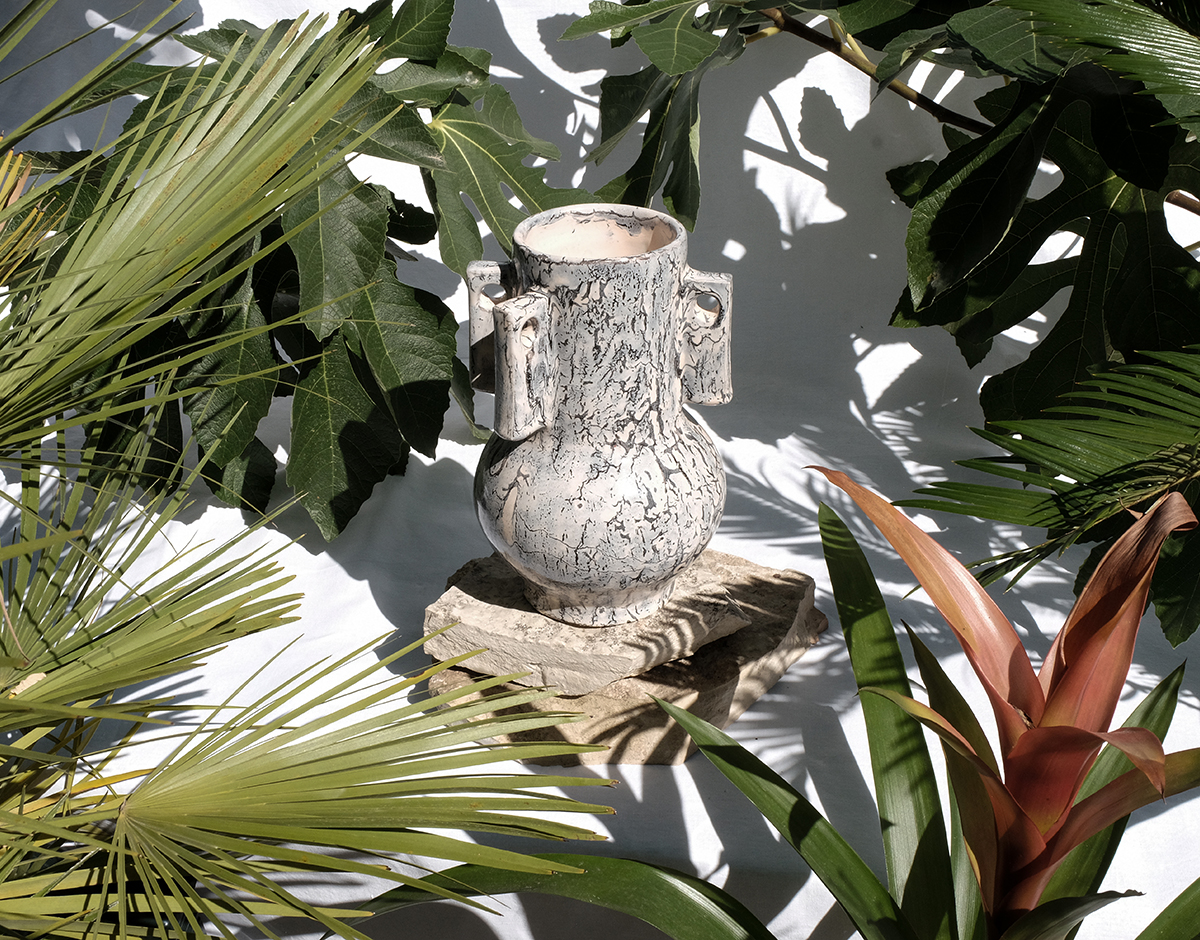
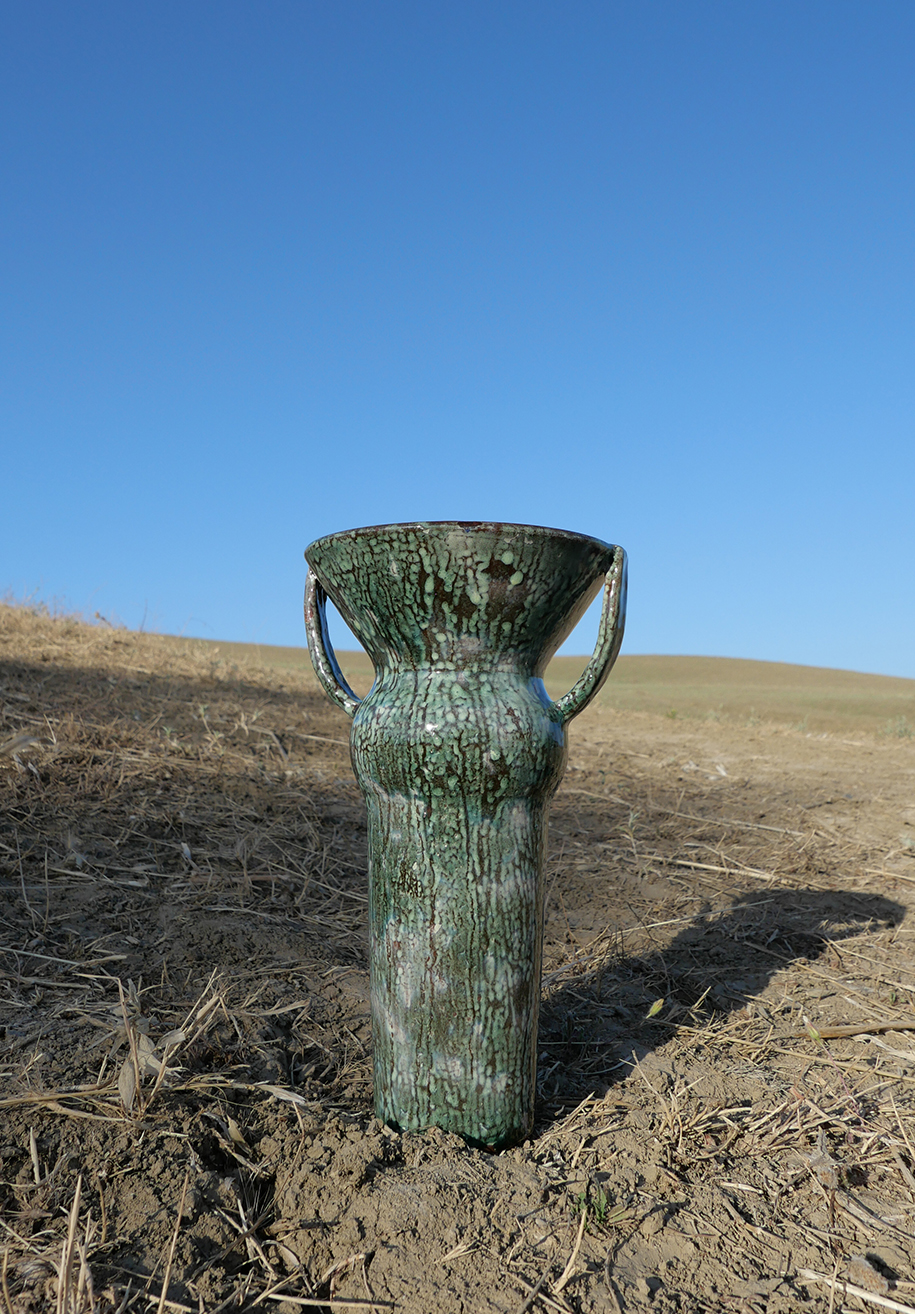
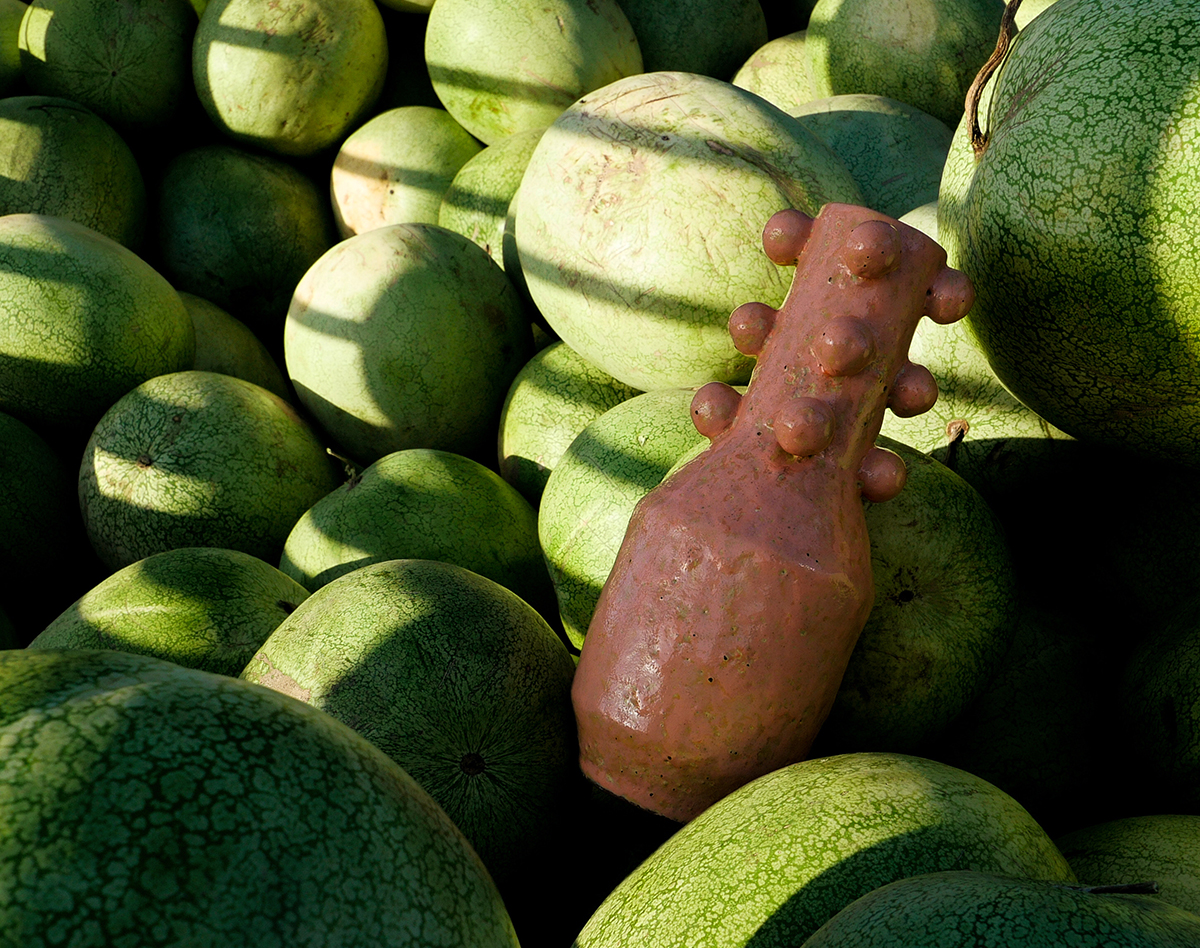
IBKKI’s collections are full of streamlined vessel shapes with curvilinear or angular handles. Glazes and decoration range from viscous amalgamations to sparely applied brushstrokes based loosely on prehistoric Kabylie signs and symbols. The aesthetic is uniquely IBKKI, which is to say, it is the alchemy of Azel and Youri and their understanding of Kabylie. Describing the collection, they remark that it is made up of “the colors we see everyday [in Kabylie]. The plants, the animals, even the sky is different here.” Azel explains further: “ We wanted to stay away from traditional objects. We wanted to do something new from Kabylie. And not just take something that’s not ours and exploit it to make profit. We really wanted to make our own thing.” The collection is representative of “everything that is inside us that has been redistributed into the object.”
